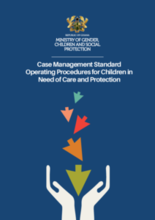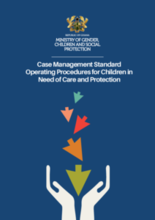Displaying 91 - 100 of 276
This webinar series offers technical assistance to child welfare agencies in the US on how to use data to improve outcomes for children and families.
This study focuses on workers’ rationales in placement decisions in child abuse cases in the Netherlands.
In this study, the authors used a two-year Texas foster care entry cohort to examine the extent to which children experience “progress moves”, such as moving to a sibling placement or to live with a relative, versus non-progress moves, such as moving due to risk of abuse.
These Standard Operating Procedures (SOPs) describe guiding principles, procedures, roles and responsibilities in the prevention of and response to child protection for children residing within Ghana.
This Standard Operating Procedures (SOPs) is intended as a guide for social workers in handling cases of children in need of care and protection.
This study presents longitudinal analyses of the case flow of youth aged 3–17 in Washington State's foster care system, tracking rates of screening, scoring above or below clinical criteria cutoff scores, and service receipt.
Reported here are findings from a recent partnership research project focused on optimizing grandparent contact and ongoing relationships with grandchildren after child safety concerns.
This article contributes to a growing body of research that takes the user perspective as its point of departure when conducting research in social work to examine how parents perceive and experience child protection practice.
The article examines how 36 child welfare caseworkers in 6 different teams in Norway investigate, assess, and make decisions at the phase of an incoming referral.
The aim of the study was to conduct a systematic review of the literature on factors that determine decision making in child protection investigations.


